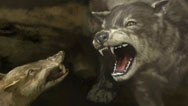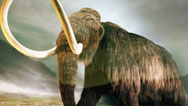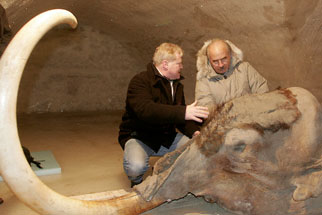A Mammoth Waste of Time
- By Peter Tyson
- Posted 07.01.08
- NOVA scienceNOW
When it comes to figuring out all you can about an extinct mammoth and its world from its remains, there's nothing like a good piece of poop. It may not look like much, but to a paleoecologist it's a priceless gem. In this slide show, have a look at what a single chunk of dung revealed about its maker as well as about the mammoth's diet, habitat, even the climate in which it lived 22,000 years ago.
Credits
Images
- (dung, grass, Poa cf. arctica seed, mineral dust, willow stems, leaves, willow
twig cross-section, pollen, bud, moss spore)
- © Institute for Biodiversity
and Ecosystem Dynamics/from original publication van Geel, B., Aptroot, A.,
Baittinger, C., Birks, H.H., Bull, I.D., Cross, H.B., Evershed, R.P.,
Gravendeel, B., Kompanje, E.J.O., Kuperus, P., Mol, D., Nierop, K.G.J., Pals,
J.P., Tikhonov, A.N., van Reenen, G. and van Tienderen, P.H., 2008. The
ecological implications of a Yakutian mammoth's last meal. Quaternary Research 69: 361-376, University of Amsterdam;
- (Yukagir mammoth, Yukagir landscape, Yukagir's extraction)
- © Francis Latreille/Corbis
Related Links
-

Paleontologists discover a pair of mammoths locked together by their tusks. What happened?
-

Paleontologist Mike Voorhies, who helped solve the enigma of the entwined mammoths, answers viewer questions.
-

Overhunting, climate change, disease, and now a comet. What did kill off the megafauna?
-

Scientists propose a radical new idea of what killed off mammoths and other large animals at the end of the Ice Age.
Close
You need the Flash Player plug-in to view this content.








